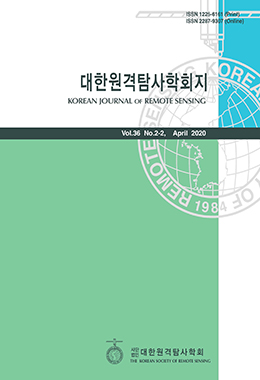본 연구는 전산유체역학(computational fluid dynamics, CFD) 모델을 이용하여 도시 지역에 위치한 도시대기측정소의 대기질 대표성을 평가하고, 측정 목적에 따른 측정소 위치 선정에 대한 방법론을 제시하였다. 이를 위하여 대상 지역을 은평구 도시대기측정소(air quality monitoring system, AQMS)로 선정하였고 두 가지 배출 시나리오(대기오염물질이 배경에서 수송되는 경우, 도로에서 배출되는 경우에 대한 수치 실험을 수행하였다. 대기 흐름은 대상 지역의 북동쪽과 남동쪽에 위치한 산악 지형의 영향을 크게 받고, 건물이 밀집한 지역에서는 2차 순환에 의한 복잡한 흐름이 나타났다. 대기오염물질이 배경에서 수송되는 경우에, 대기오염물질 분포는 지형(산)의 영향을 크게 받았다. 선오염(도로)에서 배출되는 경우에는 도로 위치와 건물 분포/높이 영향을 크게 받았다. 은평구 AQMS 위치에서 수치 모의된 농도는 지형보다 건물의 영향이 크게 나타났다. 배출 시나리오 결과를 이용하여 은평구 AQMS가 대상 지역의 대기질을 대표할 수 있는지에 대하여 평가하였다. 은평구 AQMS 위치에서 모의되는 농도는 두 시나리오의 층 평균 농도와 유사한 크기를 가지고 있어 측정 높이에서의 대기질을 대표할 수 있다고 판단된다. 대기오염물질은 시·공간적으로 비균질적이기 때문에 측정 목적에 따른 고도 별 측정망 위치 선정에 대한 가이드라인을 제시하였다. 측정망을 고농도가 나타나는 지역(hot spot)과 청정 지역(clean zone), 각 층의 평균 농도가 나타나는 지역(average zone), 건물/지형에 가로막혀 흐름의 유입과 유출이 활발하지 않는 안락처 지역(shelter zone), 외부에서 수송되는 배경 농도를 대표할 수 있는 지역(equibackground zone) 등 총 5가지로 분류하여 조사하였다.
Using a computational fluid dynamics (CFD) model, this study evaluated the representativeness of an air quality monitoring system (AQMS) in an urban area and presented a methodology to determine the suitable AQMS locations for specific purposes. For this, we selected a 1.6 km × 1.6 km area around the Eunpyeong-gu AQMS (AQMS 111181) as a target area. We conducted simulations for two emission scenarios (scenario one: air pollutants transported from inflow boundaries, scenario two: air pollutants emitted from roads). Urban airflows were markedly influenced by mountainous terrain located in the northeast and southeast of the target area, and complicated airflow patterns occurred around the buildings. The distributions of air pollutants were dependent on the terrain (mountain) in scenario one, but the road location and building height in scenario 2. We evaluated whether the AQMS could represent the air quality in the target area based on the simulations for two scenarios. The concentrations simulated at the AQMS were similar in magnitude to the layer mean concentrations, which indicated good representativeness for the air quality in the target area. We also suggested which locations were suitable for different measurement purposes (hot spots, clean zones, average zones, shelter zones, equi-background zones).




